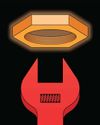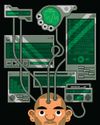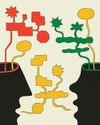
ANNALS OF MEDICINE
In 2014, Erin Storch looked in the mirror and felt as if she were drifting leftward. It was a feeling she didn’t know how to fully describe. She had been on maternity leave, and had recently returned to her job at a hospital consultancy in Washington, D.C. Storch had been promoted while on leave, so she was learning something new at work—and it seemed strangely difficult to absorb the information. She was also pumping milk three times a day. People suggested that what she was experiencing might be profound exhaustion; she disagreed. “I knew in my gut that the way I was feeling was not within the spectrum of what you would consider normal,” she said.
There were further unsettling sensations: “Coffee tasted like water. The left side of my body was weak and numb.” Storch went to see her ob-gyn, who sent her for a CT scan. Nothing unusual showed up.
Storch’s son was six months old when her symptoms manifested. When he was seven and a half months old, she walked down the stairs while holding him, and fell. Her son was O.K. “But then I knew that something was really wrong,” she said. She found a new doctor, who sat with her and her husband “for maybe forty minutes. It was just a conversation—there wasn’t even a physical exam. He said to me that he knew a lot of moms with demanding careers and that this was not that.” She started to cry from the relief of being believed. He scheduled an MRI for that evening. “But since there was some time to kill I decided, being me, to go to work,” she said. She crashed her car into a pole in a garage on M Street.
This story is from the {{IssueName}} edition of {{MagazineName}}.
Start your 7-day Magzter GOLD free trial to access thousands of curated premium stories, and 9,000+ magazines and newspapers.
Already a subscriber ? Sign In
This story is from the {{IssueName}} edition of {{MagazineName}}.
Start your 7-day Magzter GOLD free trial to access thousands of curated premium stories, and 9,000+ magazines and newspapers.
Already a subscriber? Sign In

ART OF STONE
\"The Brutalist.\"

MOMMA MIA
Audra McDonald triumphs in \"Gypsy\" on Broadway.

INTERNATIONAL AFFAIRS
\"Black Doves,\" on Netflix.

NATURE STUDIES
Kyle Abraham's “Dear Lord, Make Me Beautiful.”

WHAT GOOD IS MORALITY?
Ask not just where it came from but what it does for us

THE SPOTIFY SYNDROME
What is the world's largest music-streaming platform really costing us?

THE LEPER - LEE CHANGDONG
. . . to survive, to hang on, waiting for the new world to dawn, what can you do but become a leper nobody in the world would deign to touch? - From \"Windy Evening,\" by Kim Seong-dong.

YOU WON'T GET FREE OF IT
Alice Munro's partner sexually abused her daughter. The harm ran through the work and the family.

TALK SENSE
How much sway does our language have over our thinking?

TO THE DETECTIVE INVESTIGATING MY MURDER
Dear Detective, I'm not dead, but a lot of people can't stand me. What I mean is that breathing is not an activity they want me to keep doing. What I mean is, they want to knock me off. My days are numbered.